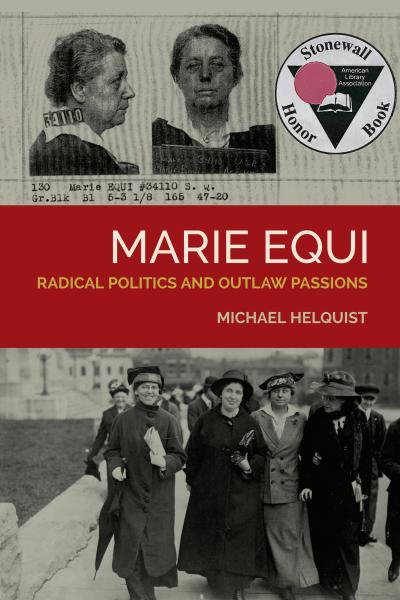May Day, otherwise known as Workers’ Day or International Workers’ Day, serves to commemorate the achievements of labor movements. May 1st is not a designated holiday in the United States, but an American event inspired international recognition of May Day. On May 1, 1886, Chicago labor activists organized a strike and protest to demand an 8-hour work day – something we take for granted now but wasn’t widely accepted until the 1930s after decades of activism. On May 4, in what came to be known as the Haymarket Affair, a bomb was thrown by an unidentified person leading to violence between police and civilians, and death and injury on both sides. This led to international labor and socialist groups designating May 1 International Workers’ Day in support of the labor protestors at Haymarket. May Day is celebrated internationally, but not in the United States. Political leaders in the U.S. did not want to recognize a day associated with labor unions and socialism, and instead Labor Day, celebrated in September, was created.
With a resurgence in the labor movement in the United States, and labor victories such as the first unions at Starbucks and Amazon, both global companies that started in Seattle, there has never been a more perfect time to learn about the rich labor history in the Pacific Northwest.
This May Day, take a moment to explore the varied and complex history of the labor movement in the Pacific Northwest specifically with these Oregon State University Press titles:
Beyond the Rebel Girl: Women and the Industrial Workers of the World in the Pacific Northwest, 1905-1924 by Heather Mayer
In Beyond the Rebel Girl, historian Heather Mayer questions the well-worn vision of Wobblies as young, single, male, itinerant workers. While such workers formed a large portion of the membership, they weren’t the whole picture. In small towns across the Northwest, and in the larger cities of Seattle, Portland, and Spokane, women played an integral role in Wobbly life. Single women, but also families—husband and wife Wobbly teams—played important roles in some of the biggest fights for justice. IWW halls in these Northwest cities often functioned as community centers, with family-friendly events and entertainment.
Enjoy this brief excerpt!
The story of the labor movement in the United States has often been told as a national story, with court cases, labor organizations, strikes, and laws that affected all workers. But that national narrative tends to focus on the industrialized cities of the East and Midwest as proxy for the nation as a whole. The IWW had success in these major cities, but it also had a different kind of success, and a different kind of membership, in the mills and fields and cities of the Pacific Northwest. In order to understand why so many major events in the union’s history took place in this region, and why the organization appealed to so many people in the area, we need a better understanding of what makes this area unique. The industrialization that happened in the East over the long course of the nineteenth century happened in a few short decades in Oregon and Washington. The volatility of that transformation, as well as the independent nature of those who moved here from other areas of the northwest, made it a fertile ground for radicalism.
* * * * * * * * * *
After the Red Scare that followed World War I, membership in the Socialist Party declined in the Northwest, as it did nationally. Moderate Socialists moved toward the Democratic Party, while radicals moved toward the Communist Party. The Red Scare and overall conservative political climate of the 1920s claimed what was left of the membership.
By the early twentieth century, this confluence of abundant natural resources, a largely unorganized workforce, and an interest in radical politics made the states of Oregon and Washington ripe for a new kind of unionism, one that would shake up the region and create front-page headlines on a regular basis. That union was the Industrial Workers of the World.
See also: the OSU Press interview with Beyond the Rebel Girl’s author, Heather Mayer
Other Books of Interest
The Red Coast: Radicalism and Anti-Radicalism in Southwest Washington by Aaron Goings, Brian Barnes, and Roger Snider
The Red Coast is a lively and readable informal history of the labor, left-wing, and progressive activists who lived, worked, and organized in southwest Washington State from the late nineteenth century until World War II. The book serves as a hidden history for a region frequently identified with conservatism, rescuing these working-class activists from obscurity and placing them at the center of southwest Washington’s history.
Marie Equi: Radical Politics and Outlaw Passions by Michael Helquist
Named a 2016 Stonewall Honor Book by the American Library Association, Marie Equi explores the fiercely independent life of an extraordinary woman. Born of Italian-Irish parents in 1872, Marie Equi endured childhood labor in a gritty Massachusetts textile mill before fleeing to an Oregon homestead with her first longtime woman companion, who described her as impulsive, earnest, and kind-hearted. This biography will engage anyone interested in Pacific Northwest history, women’s studies, the history of lesbian and gay rights, and the personal demands of political activism. It is the inspiring story of a singular woman who was not afraid to take risks, who refused to compromise her principles in the face of enormous opposition and adversity, and who paid a steep personal price for living by her convictions.
Sierra Sherland, OSU Press Grifis Publishing Intern
Related Posts
OSU Press Interview with Heather Mayer
 The history of the Industrial Workers of The World (IWW) is a fascinating story of a radical labor movement in the 1900s. The members were referred to as “Wobblies” and fought tirelessly for social justice. While historians have focused on this movement and their work, the role of women in the IWW has long been overlooked.
The history of the Industrial Workers of The World (IWW) is a fascinating story of a radical labor movement in the 1900s. The members were referred to as “Wobblies” and fought tirelessly for social justice. While historians have focused on this movement and their work, the role of women in the IWW has long been overlooked.
Heather Mayer researched the role of women in the IWW and compiled what she discovered in Beyond the Rebel Girl, one of our most recent titles. In this interview, Meyer shares her experience of conducting this important research, learning more about key figures in the movement, and the origin of her interest in radical history. This interview was conducted through email with Zoë Ruiz and Carolyn Supinka, our Griffis Publishing Interns.
Related Titles

The Red Coast
The Red Coast is a lively and readable informal history of the labor, left-wing, and progressive activists who lived, worked, and organized in southwest Washington...

Beyond the Rebel Girl
More than a century after their founding in 1905, the Industrial Workers of the World—or Wobblies as they are commonly known—remain a popular subject for...

Marie Equi
Named a 2016 Stonewall Honor Book by the American Library Association, Marie Equi explores the fiercely independent life of an extraordinary woman. Born of Italian-Irish...
